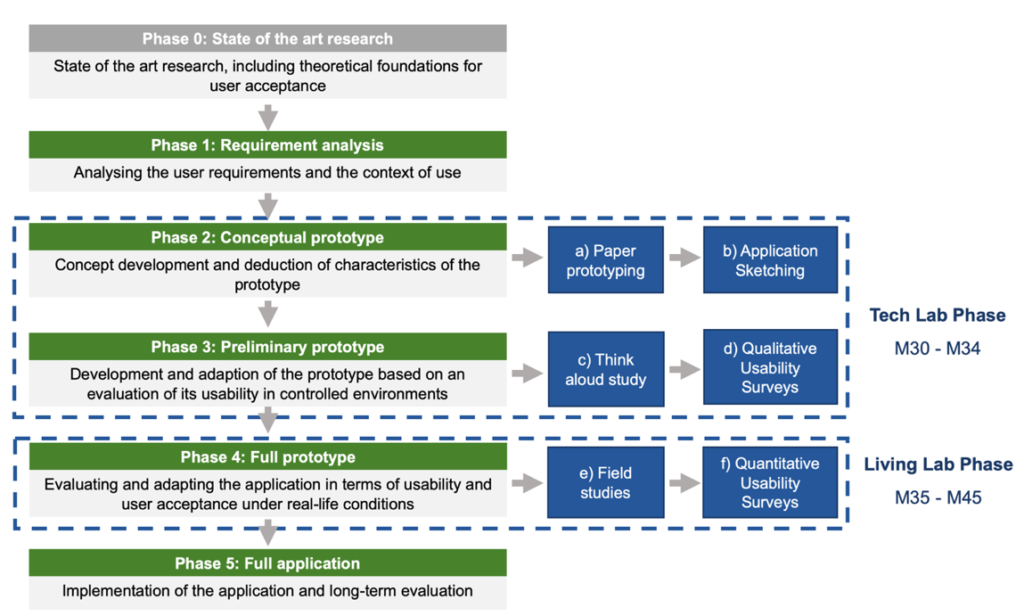How did vCare choose its Participatory Design tools and methods?
When developing innovative healthcare technologies, acceptability and usability of the technology should be evaluated by users (i.e., medical staff and patients) throughout all the development phases, in order to guide the design process in accordance with user’s specific needs and reduce the risks of non-acceptance.
The methodological approach to drive the Participatory Design process has been derived from TUD experience[1] (Harst et al, 2020), which describes the methodology adopted for mapping different stages of a Participatory Design process during the development of IT healthcare applications.
This is a 6 phases model where each phase features specific tasks and tools to gather user’s insights: Phase 0 (State of the art research), Phase 1 (Requirement analysis), Phase 2 (Conceptual prototype), Phase 3 (Preliminary prototype), Phase 4 (Full prototype), and Phase 5 (Full application).
In vCare, Phase 0 and Phase 1 have already been performed in previous phases, while the other phases have been mapped according to the time schedule of the upcoming tasks. Specifically, starting from the proposed methodology, we derived 6 stages for the Participatory Design approach: The Tech Lab includes the first 4 stages (Up to the preliminary prototype) while the last 2 ones are embedded in the Living Lab and Pilot Test activities.

[1] Harst L, Birnstein J, Wollschlaeger B, Fuchs T, and Timpel P. 2020. ” User-centered design procedures throughout the lifecycle of healthcare IT – a stepwise methodological perspective”. (under submission)
